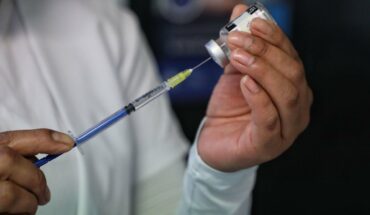city of Mexico.-a new theory that would explain the pain in people with amputated limbs phantom limb was raised by Dr. Max Ortiz Catalán, who described how neural activity patterns are modified when a person already does not have a tip.
The results of this research project, which came off of a previous work which developed an innovative treatment for the pain of the phantom limb based on artificial intelligence and augmented reality, were published in the magazine Frontiers in Neurology through The Stochastic Entanglement and Phantom Engine Execution Hypotheses article: A Theorical Framework for Origin and Treatmente of Phantom Limb Pain.
The theory described in the text points out that at the neuronal level is generated a stochastic mess – that occurs randomly – between the neuroespecificidad of pain and impaired sensorimotor circuit, is say, some neurons responsible for movement of the extremity amputated are activated at the same time that some neurons responsible for pain and generates a connection between them that gives rise to the phantom limb pain. Also, the text poses that those connections can be reversed, thus reducing the medical condition.
The Conacyt information agency interviewed a doctor in biomedical engineering Max Ortiz Catalán, who currently serves as Associate Professor of the Chalmers University in Sweden, who explained that the brain has parts dedicated to the generation of sensations and motor control; networks exist 1-mexexpli0418.jpgneuronales Central and peripheral charge of transmit these sensations and process what happens.
Neural reorganization “circuits associated with the control of a limb are extensive and when a person loses it, all these remain without work abruptly, but neurons cannot go inactive completely from one moment to another, sporadically they will trigger a signal, i.e., limb loss networks are activated and if this occurs at the same time responsible for the sensation of pain neurons are activated, you can build a connection between the two.”
These connections, the biomedical engineer described them as a reorganization of neuronal activity map, whose distribution changes after amputation in patients who experience the pain of the phantom limb, while persons who do not they have that feeling kept the original activity.
“In a person it heals, the area dedicated to hand feelings and the control is always the same, while in some patients with amputations is also perceived a redistribution of the electrical activity in surrounding areas to the control of the stump or lips- close to the hand control – because these networks of neural control start to take the resources that the loss of the limb left utility”.
The researcher pointed out that his theory is based on findings to date, but further experiments are needed to validate it, or even discard it, and so will extend the work being done to treat phantom pain of members through the technology that He developed a couple of years ago.
“We started already a clinical test, international and controlled, involving 10 hospitals in eight countries; It is the largest clinical trial which has been globally phantom limb pain”.
70 involved patients treated with the developed technology and are observed and analyzed through MRI and EEG to see if the predictions of theory posed – distribution of neuronal activity map – is satisfy by patients with pain and those who aren’t.
Treatment technology developed for phantom limb pain works in the following way: the patient basically sees itself in a kind of mirror through a camera and a monitor, but the simulation is added to that image of the a limb that was amputated, using augmented reality.
The person is with a full body, but the most important part is that you can control that virtual limb in the same way that would control the biological end, which provides feedback to the brain. At the neuronal level – thanks to the new theory-is now known that this therapy causes that connection that was generated between neurons in the motor system and responsible for the pain is weak, thus reducing the sensation of pain.
Source: Conacyt
translated from Spanish: What causes phantom limb pain?
December 5, 2018 |





